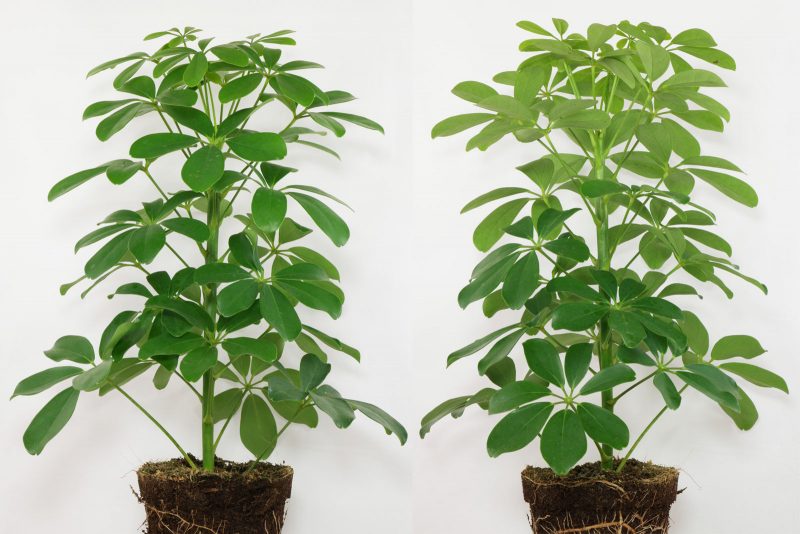Scheffler has long been grown as a houseplant for the sake of spectacular complex-dissected leaves. Settle the beauty at home is quite simple. The kind you like can be grown from seeds, or use one of the methods of vegetative propagation. When creating optimal conditions for plant growth, care will not be difficult and consists of only 3 procedures: watering, fertilizing and transplanting. We learn in detail about the breeding of shufflers.
Material Content:
Plant description
Schefflera (Schefflera) is a numerous (about 590 species) genus of plants of the Araliev family, whose homeland is considered to be Hawaii, Taiwan and southeastern parts of Asia.
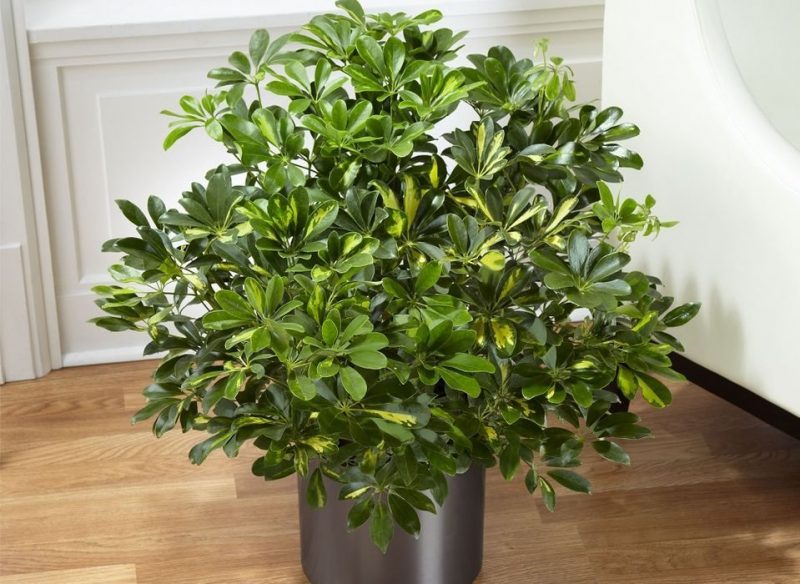
Representatives of this genus are distinguished by a variety of life forms. Among them there are stunted and rather tall shrubs, vines and trees, raising to a height of 1.5-2.5 meters. However, all of them are united by the presence of beautiful leaves that are similar in shape and color. Dense and glossy, they are attached to the shoots with the help of long petioles and cut into several (from 4 to 12) elongated lobes, diverging, like rays, from one point. Leaf blades are painted in shades of green, olive, mustard, sometimes interspersed with a lighter (white, cream, yellow) tone and look very decorative.
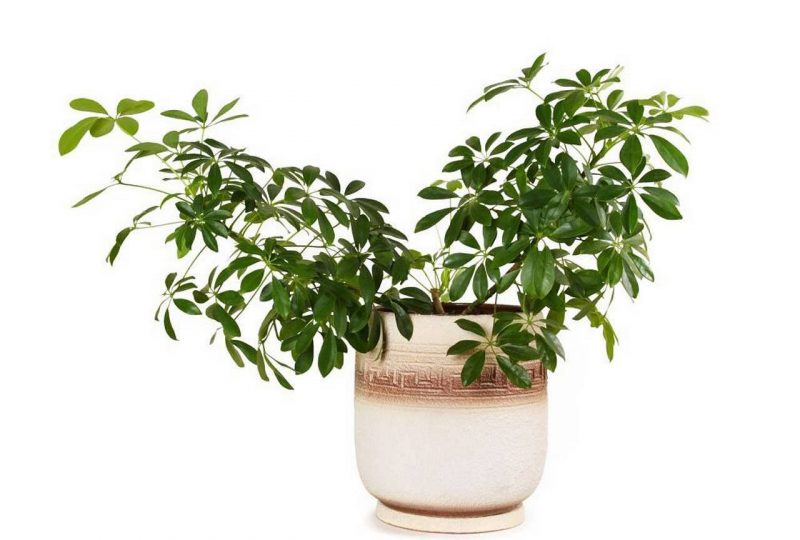
Under natural conditions, shufflers bloom, forming spectacular paniculate or racemose inflorescences of saturated yellow or scarlet color.
Some species of shefflers are cultivated and grown indoors, representing spectacular shrubs or small trees, whose crowns can be formed. When grown under artificial conditions, the sheffler does not bloom.
Propagation of a Scheffler flower by cuttings
Shefflers reproduce using seeds and vegetative organs: cuttings, cuttings and leaves.
Propagation by cuttings is practiced in the spring, sequentially performing two simple actions:
- Harvesting cuttings: from well-developed adult plants, semi-lignified shoots about 10 cm long are cut, with several (3-5) leaves. The lower sections of the cuttings are treated with a drug that stimulates the development of roots.
- Rooting: carried out in small containers filled with settled water or a substrate made up of a mixture of 2 parts of turf land 1 part of sand.
Greenhouse conditions are organized by the cuttings, covering the container with transparent, dense material, and provide:
- heat - at least 22 ° C;
- moist fresh air, for the intake of which daily ventilation is carried out, as the substrate dries up - moistening and spraying the shoots;
- light, excluding direct sunlight.
The roots grow within 2-4 weeks. As soon as this happens, the plants are planted in separate small containers filled with soil of the same composition as for rooting.
How to propagate by air layering
New plants can be obtained using layering. This method is no less productive, but requires the contractor to have knowledge and skills in carrying out such procedures, and is suitable for propagating only adult plants with several well-developed lateral shoots.
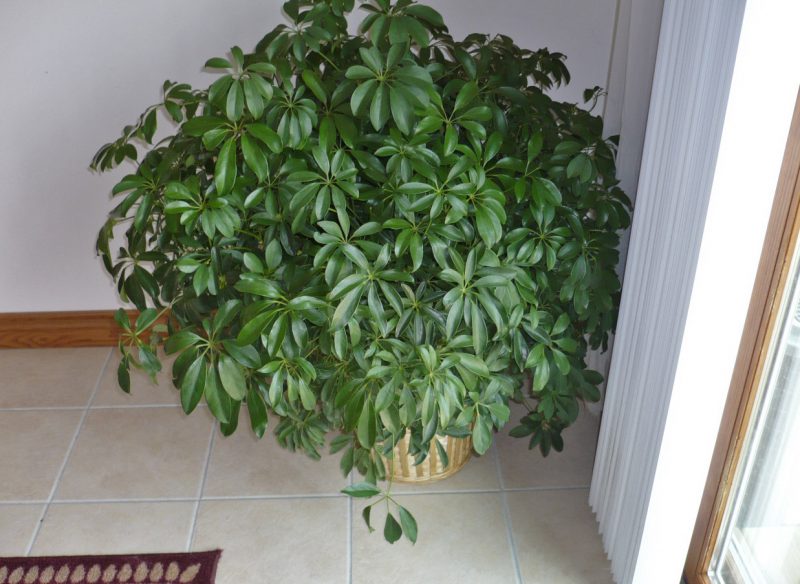
To get layering:
- choose a strong side shoot;
- on one of the shoot areas, free from leaves, make a small (1/3) incision;
- the slice area is covered with wet sphagnum and covered with polyethylene.
The moss should not dry out, therefore the protective material is periodically bent, or partially removed and irrigated the surface of the sphagnum from the spray gun.
The roots will appear in 1-1.5 months. After this, the shoot is separated from the maternal form and planted in a separate pot.
Leaf propagation method
If the plant is still young and there is no way to prepare cuttings or make layering, then it is propagated by leaf.
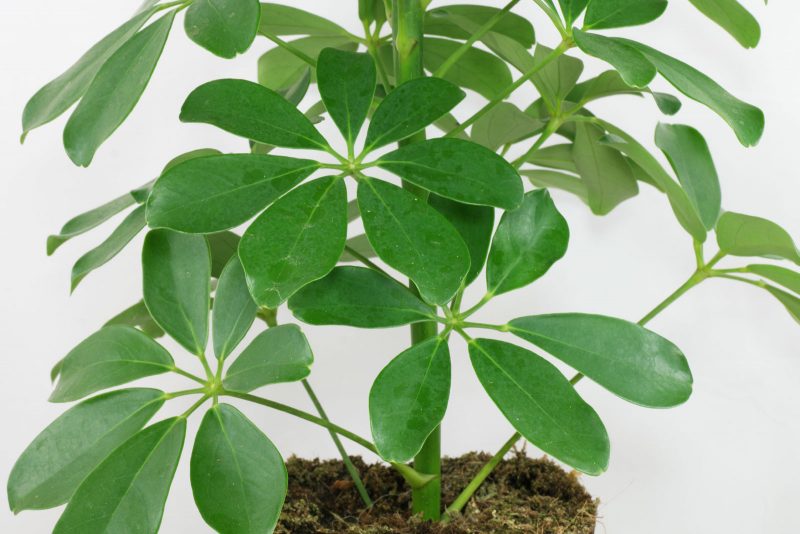
For this:
- a few medium-sized intact leaves are selected on the flower, which are cut with a sharp tool along with an insignificant part of the shoot - the place where the leaf stalk is attached to it;
- cut leaves are placed in standing water, where any preparation stimulating root growth, for example, Kornevin, is added;
- they arrange a greenhouse for leaf cuttings - they cover it with a plastic bag, put it in a warm, bright place and patiently wait for the roots to appear: the leaves of the shefflers take root long and hard.
Rooted leaves are planted in the soil of the same as when grafting the composition and look after the same cuttings in the same way. After the emergence of new shoots, young shefflers are transplanted into separate pots, in a permanent place.
Propagation of flowers by seeds
Schaeffler can be grown from seeds in seedlings. Unlike vegetative propagation methods, this is a longer and more laborious process, starting with the acquisition of seed.
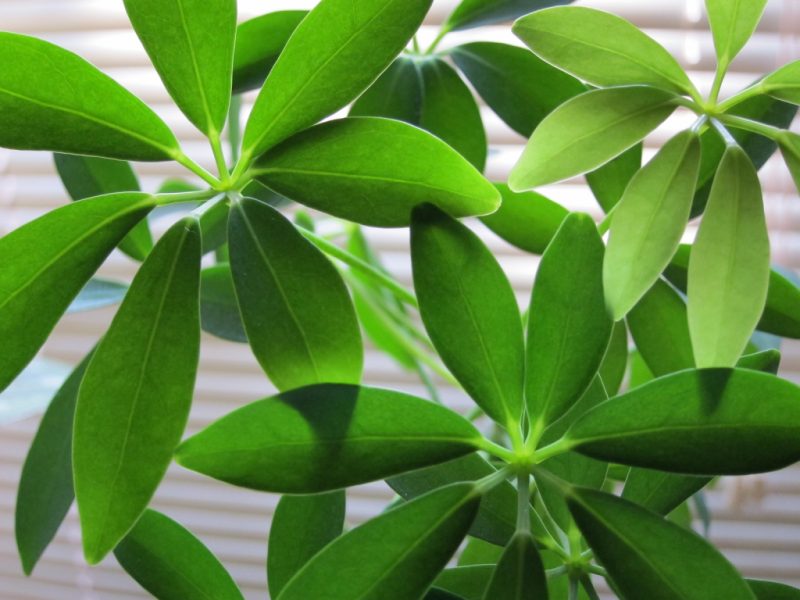
Sowing is carried out in February. On the eve of the seeds, the shefflers are soaked in Epin's solution, according to the instructions for the drug. This will accelerate their germination.
For growing seedlings, it is convenient to use wide and fairly deep boxes or containers filled with earth mix. The most suitable is a mixture of equal parts of turf, sheet land and sand.
Before planting, the soil is disinfected:
- shed with a solution of potassium permanganate of medium concentration or any antifungal drug;
- calcined for half an hour in the oven, or incubated for up to 30 minutes for a couple.
The seeds are laid out in small holes with a depth twice as long as the seed, at a distance of 10-15 cm and covered with earth. After sowing, the soil is moistened from the spray gun and the containers are covered with transparent airtight material.
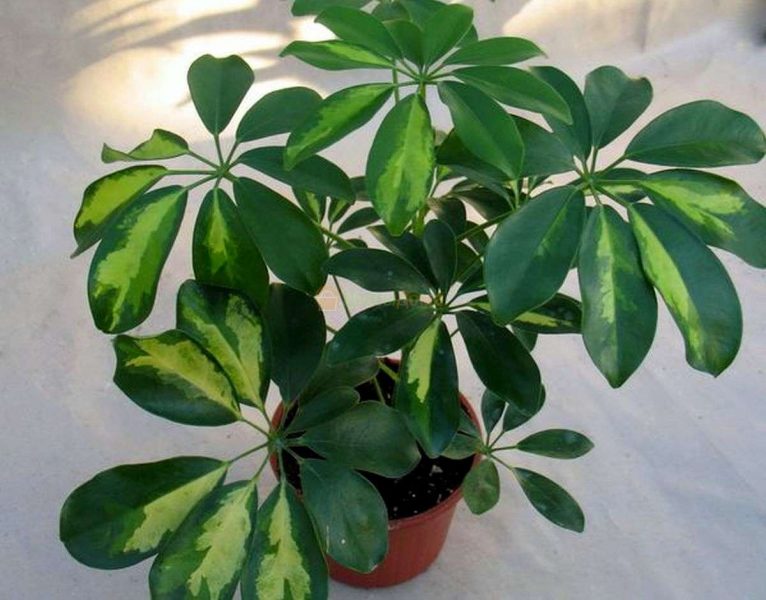
Crops are looked after:
- placed in a bright and warm (22-26 ° C) place;
- regularly ventilate daily by turning over the protective material;
- as it dries, the substrate is moistened with warm water.
The first sprouts will appear in about a month. When 3-4 seedlings develop in seedlings, they are dived into separate small containers filled with soil of a composition similar to growing seeds.
Small shufflers are placed in a cool room, with an air temperature not exceeding 18 ° C. The grown plants, the roots of which have mastered the entire volume of the earth, are transplanted into containers of a slightly larger diameter (10 cm) and taken care of as adult forms.
Correct Transplant Schefflera
Schaeffler is characterized by rapid (30-50 cm per year) growth and prefers volumetric containers, so when growing it you can not do without transplantation.
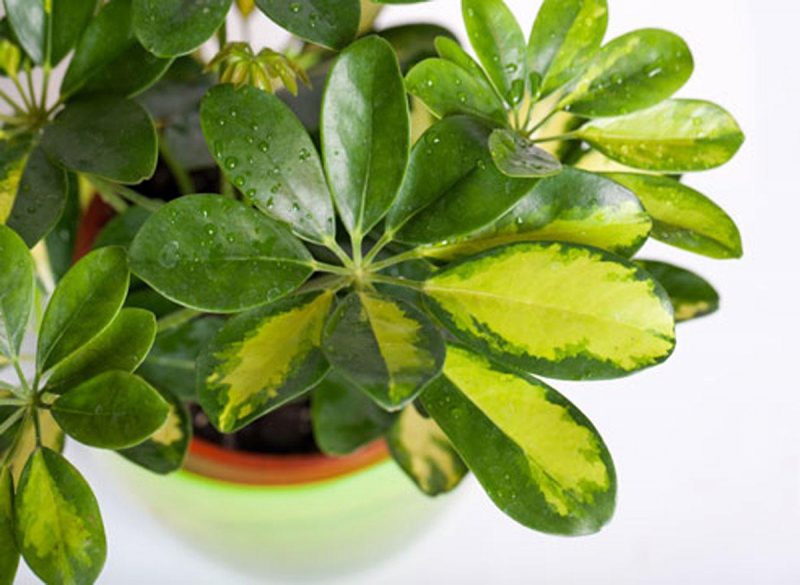
The frequency of transplantation is determined by the size of the flower:
- low varieties are transplanted annually;
- large specimens - once every 4-5 years, when it becomes obvious that the flower is crowded.
The transplant is carried out in spring or autumn, taking care of a new, more voluminous pot and the required amount of fresh soil in advance.
The flower is transplanted by transshipment, adhering to the following scheme:
- Before the procedure, the plant is abundantly watered. This will preserve the integrity of the roots during transplantation.
- The earthen lump is carefully removed from the old pot and placed in a new container, on the bottom of which drainage and a small amount (1/3 of the volume) of soil are preliminarily poured. The remaining voids are filled with a substrate.
- The transplanted flower is abundantly watered and placed for several days in partial shade and coolness (18–20 ° C).
Features of indoor plant care

For growth and decorative appearance, a sheffler's indoor flower needs the following conditions:
- spacious bright room;
- relative coolness: 16–20 ° C in summer and 12–16 degrees in winter;
- fresh, drafts-free, moist air.
Plant care is simple and, in addition to transplanting, comes down to irrigation, top dressing and, if necessary, or the owner’s desire, pruning.

A feature of flower care is the mandatory regularity in carrying out these procedures.
- Watering: the soil is moistened as the upper (2 cm) layer of soil dries out in small portions of settled water at room temperature, avoiding the accumulation of water in the pan. The plant loves spraying, responding to it with a fresh look and bright shine of leaves.
- Top dressing: in the summer fertilizers are applied once a week, in the winter - 2 times a month, using only liquid additives.
- Scheffler tolerates pruning well, which is widely used by gardeners to give the crown a certain flower, in the form of a bush, ball or tree, shape and size.
The plant reacts to serious disturbances in care by dumping of foliage. The situation is reversible, leaves can be built up, but it will take time and effort.
With the observance of reproduction technologies and proper care for the shefflera, you can get a wonderful houseplant that will delight others with its unusual beauty for a long time.


